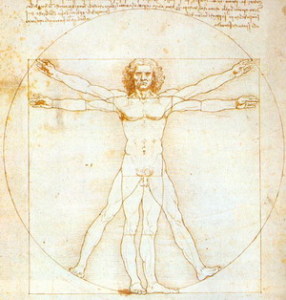Put any two writers over 40 years of age together, and eventually the subject will turn to issues of ergonomics: neck, back, wrist pain. A friend took on literary jury duty because she needed a break from the computer. Another friend’s son, a musician, had to take a course in university on how to protect his body from tendonitis and other crippling ailments. Such courses should be mandatory for writers and artists as well. It’s hard to be creative if you’re in pain.
Over the years I’ve used a variety of wrist supports for working at the computer. When I’m in full-writing mode, and putting in long hours, I set a timer to go off every hour, and place it at a distance from my station so that I have to get up to turn it off. I also have an exercise routine I try to do each time.
 I don’t often work at a desk—preferring to be reclined on a daybed or couch with my laptop on my lap and my wireless mouse set on a book by my side—but when I do, I make sure that my monitor is at a comfortable eye-level, and that a keyboard and mouse is close to my lap. I also use a document support (shown at right) so that the book or papers I am working from are directly in front of me and I don’t have to crane my neck. A good chair is important too: the one I have in Mexico is fully adjustable, but it’s not as good as the chair I use in Canada, and I feel the difference. I’ve a box in my storage closet full of shoulder, neck and wrist supports I’ve resorted to over the years.
I don’t often work at a desk—preferring to be reclined on a daybed or couch with my laptop on my lap and my wireless mouse set on a book by my side—but when I do, I make sure that my monitor is at a comfortable eye-level, and that a keyboard and mouse is close to my lap. I also use a document support (shown at right) so that the book or papers I am working from are directly in front of me and I don’t have to crane my neck. A good chair is important too: the one I have in Mexico is fully adjustable, but it’s not as good as the chair I use in Canada, and I feel the difference. I’ve a box in my storage closet full of shoulder, neck and wrist supports I’ve resorted to over the years.
Ultimately, I think the key will be to cut down on typing. A friend is sending out scans of hand-written text to be typed. Although I’ve begun to explore dictation, I’ve yet to become comfortable with it. I need to push myself in this direction—a New Year’s Resolution.



Lauren, that chair is in our snow-bound northern house. I’ll make a note to let you know when we return next spring, although I hope you find your chair before then! I went to an office furniture outlet and sat in many chairs. It was WAY more than I wanted to spend (hundreds of dollars), but it was a worthwhile investment. I don’t like arms on a chair — they restrict my elbows — but armless chairs seemed not to be as good quality. I had the option of taking the arms off the chair I liked best, which I did.
BTW, I’m very impressed that you held to 1000 words a day all though the Christmas season, houseguests and all!
Ms. Lucy, I do try not to skip breaks — it makes such a difference — but it’s so hard to be disciplined. The key for me is that timer. Now: if only I would SET it!
Okay, Sandra – cough it up!! What’s the brand name of this magically supportive chair you use? I have a terrible time finding comfy chairs, as I’m so short (well, 5’4″ is apparently short these days). I long for a good chair, I yearn for a good chair, I dream of a good chair…
Sandra, try not to skip breaks. I know that that’s key for me. When I don’t take breaks regularly, I immediately feel it in my shoulders right down to my wrists. And, in my case too, staying away from typing is not an option. I may look into dictation as well…good idea.
Michelle, thank you. That’s an excellent overview. I’m printing it out right now.
One thing to considered is frequent breaks. See this whitepaper on comfortable computing for some ideas… http://www.ergotron.com/Portals/0/literature/whitePapers/english/Portable-Ergonomic-White-Paper.pdf
As a writer I know that less “typing” isn’t always possible! : – )
I agree, Lilian. I’ve used and really liked a gel wrist-rest.
I’d recommend a mousepad with a gel wrist-rest. It’s so comfortable and supports the wrist so less stress.